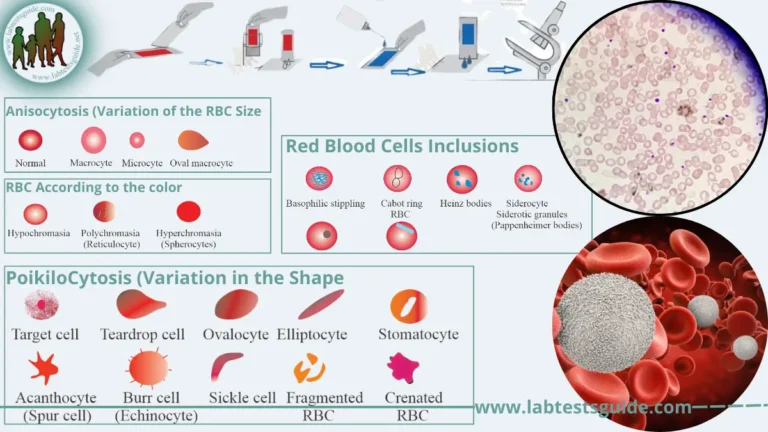Fibrinogen Degradation Products Test
This test is used for the detection of fibrin/fibrinogen degradation products in patients suspected of having thrombotic disorders. Fibrinogen is a blood clotting factor produced by hepatocytes and megakaryocytes. It is converted to fibrin clot during blood coagulation. When this clot is degraded (by plasmin), degradation products are produced. These degradation products include X, Y (early split products) and D, E (late split products).In healthy individuals, the degradation products are cleared but in case of any pathology, raised level is seen in blood. This process is localized in normal conditions, but in several coagulation disorders (such as disseminated intravascular coagulation), the process spreads and degradation of circulating fibrinogen takes place.

Principle:
It is an agglutination test. Latex particles coated with anti-FDP antibodies are mixed with test plasma. Agglutination will be observed if the plasma contains FDPs.
Requirements:
- Plasma sample (9 vol. of blood + 1 vol. of tri-sodium citrate)
- Latex reagent (coated with monoclonal anti-FDP antibodies)
- Positive and negative controls (PC; NC)
- Test card
- Glycine buffer
- Disposable mixing sticks
- Mechanical rotator (80-100 rpm)
Procedure:
- Bring the kit reagents and sample to room temperature.
- Prepare 1:2 (0.05 ml plasma + 0.05 ml glycine buffer) and 1:8 (0.05 ml plasma + 0.35 ml glycine buffer) dilutions of test plasma.
- Place 0.02 ml of 1:2 diluted plasma into one circle of slide.
- Place 0.02 ml of 1:8 diluted plasma into second circle of slide.
- Place similar quantities of positive and negative controls in separate circles.
- Gently mix the latex reagent vial (to ensure homogeneity) and place one drop to each of the circle.
- Mix the contents of each circle evenly with disposable sticks and spread over the complete area of the circle.
- Place the slide on mechanical rotator (80-100 rpm) for 3 minutes.
- Examine for agglutination macroscopically.
- Compare the results with positive and negative controls.
Results:
- Agglutination indicates a positive reaction. If the test is positive, the amount of FDP will be equal to 2.5 ug/ml or above while in case of a negative reaction (no agglutination) less than 2.5 ug/ml.
- If 1:2 dilution is positive, FDP level is from 5 to 20 ug/ml and if 1:8 dilution is positive, the level of FDP is more than 20 ug/ml.
- In case both the dilutions give negative result, the level of FDP is reported less than 5 ug/ml.
Semi Quantitative Test:
- If the test is positive, serial dilutions of the plasma are tested.
- The highest dilution of the plasma giving positive result will be the level of FDP.
Quality Control:
Positive and negative controls (animal serum in sodium azide) are included in the kit and must be run parallel to every test performed.
Interpretation Of FDP Test:
The test is falsely positive in:
- Liver diseases
- Cardiac diseases
- Pulmonary embolism
- Deep vein thrombosis
- Carcinoma
- Clinical diagnosis should not be made on FDP results alone.
- Results must be read within 3 minutes.
Possible References Used




